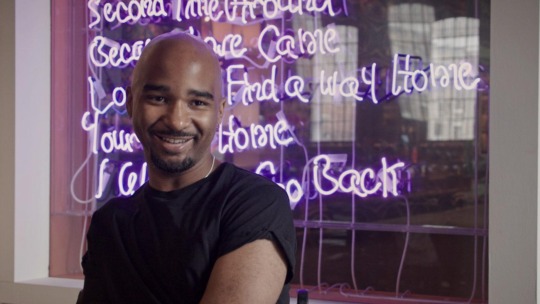
[cont. from previous page]
[cont. from previous page]
CS: Speaking of politics, how do you feel about collecting art that makes a political statement?
JC: Again it really depends on the collector. There are collectors who like that kind of art. It’s engaging and they like the dialogue when people come to their homes, but they also have to like looking at that image every day. I haven’t really encountered many collections with overtly political art. Most of the people I work with want something that puts them at ease when they come home. I personally don’t like art that makes a strong political statement. I have a photograph by Pieter Hugo, a South African artist. To me, it’s a political image. It’s a picture of a worker at the Agbogbloshie Market in Ghana, which is one of the largest repositories for discarded computers in the world. He is so graceful but God knows what the smoke is doing to him. The image is so beautiful, but it’s also showing something about our wasteful society and the harm it’s doing to the environment and to people. But my husband finds it depressing, so I had to compromise and put it in a room where he doesn’t have to look at it every day.
CS: What else are you drawn to when you see a photograph you love?
JC: I’ve been in this period of buying photographs with girls in them. It started about 9 years ago when I was pregnant with my second child and found out I was having a girl. I bought a Helen Levitt, then an Emmet Gowin, and Trine Søndergaard. I was not intentionally looking for images of girls; the images found me. For instance, I had some clients in Atlanta that wanted an artwork for their house and they only wanted to spend $5,000. They were going to be in New York City, so I told them to go to Benrubi Gallery and look at works by Matthew Pillsbury. Next thing I know, they had purchased three photographs, one of which was a Richard Renaldi of Nathan and Robyn from his Touching Stranger series. In the image Robyn is a teenage girl, I loved it so much, I had to buy one too. I love my Vivian Maier work—again, with the little girl in it. I was worried I was getting too psychological with all the girls, but I just thought they were so sweet. I also bought the first Andrew Moore photograph I saw. I loved it because he documented all of Times Square before it was “Disneyfied.” Many years ago, he came over for dinner and he said it was the last time he made those big C-prints. Now he’s all digital.

CS: Is the process important to you, how the photograph is made?
JC: It can be. My most recent purchase is a Markus Brunetti—this is going to blow your mind—he has made it his life’s mission to map out churches in Europe and photograph them, piece by piece on a large format camera. Then he cleans the images up and puts all the pieces together, like a puzzle. In 2014, I bought an image by John Chiara from Haines Gallery in San Francisco. Chiara uses a large camera obscura. There’s no negative involved, so all the prints are unique. He built a camera in a trailer and drove around San Francisco with it, setting it up where he wanted to take photos. He sets the paper up in the trailer, opens the lens, exposes the paper, closes the lens, and wraps the paper. He never knows what he’s going to get until he processes the paper. He recently got a commission to do a series in Mississippi. He did a great series in New York City, more ominous-looking, using negative paper. I’m going to toot my horn here, because I bragged about him up and down to my clients in Atlanta and New York, and he ended up having a show at Jackson Fine Art, and now Yossi Milo has picked him up in New York.

CS: You’re obviously very connected to your art.
JC: I love it. I need it. It brings me so much joy. I just like sitting on that chair and having it around me. It feels like a hug.
Caroline Stover is an Atlanta resident who works in publishing.
Jane Cofer on Collecting Photography
Related Stories
Art21 x Burnaway
Reviews
Reviews
The Incredulity of Jacolby Satterwhite
In April's Art21 x Burnaway feature, we enter and explore the resurrection, rebirth, and regenerative quality of Jacolby Satterwhite's virtual worlds.
A Landscaped Longed For: The Garden as Disturbance at the Crisp-Ellert Art Museum, St. Augustine
Christopher Stephen reviews the visual metaphors of the garden found in A Landscape Longed For: The Garden as Disturbance at the Crisp-Ellert Art Museum, St. Augustine.
Orchid Daze by Lillian Blades at the Atlanta Botanical Gardens
Blake Belcher reviews Atlanta-based Bahamian artist Lillian Blades' new work engaging orchids, transplantation, and diaspora at the Atlanta Botanical Garden.




